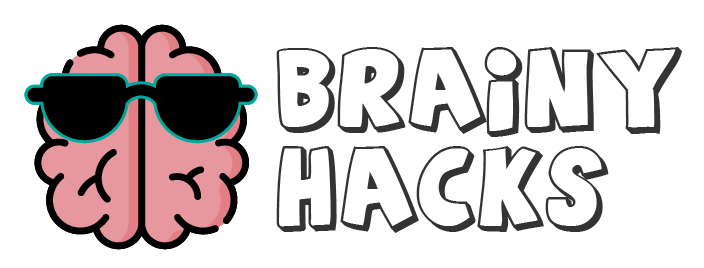You may have heard of the SQ3R method for studying and reading better but are not quite sure how it works, whether it will benefit you, and how to execute it. So in this article, we’re going to explore its history, show you how to make the most of it using examples from this online textbook on Biology, and explore its advantage and shortcomings.
Table of Contents
The History of SQ3R method
Starting at the beginning, the SQ3R method is also known as SQRRR. It’s an acronym that stands for:
- Survey
- Question
- Read
- Recite
- Review
We’ll go through each of these steps in more detail below. The technique for reading and studying was first conceptualised by an American educational psychologist and academic named Francis P. Robinson back in 1946. He published a book titled Effective Study which explores this method in depth amongst other useful tools like classroom skills, motivation to study, skills in examinations, and even diagnostic tests and answers.
Robinson has been described by contemporaries as a pioneer who contributed significantly to the fields of reading and learning in postsecondary literacy theory.
How SQ3R method works
The aim of the method is to gain as much information as possible from reading material and in so doing make reading and learning more efficient. But it’s not just enough to read and remember the material, it’s important to also address the important stages of the learning process.
These are to be able to distinguish between knowing versus understanding, being able to reflect on and understand the material by discussing it in your own words, finding and exploring the significance of that information, visualising the content, and developing mindfulness and acceptance of it.
What is the SQ3R method good for?
This method of study is particularly useful for tackling detailed and complex textbook material on subjects like biology, psychology and sociology, but less so for English, or foreign languages.
This is because many people engage with textbooks in the same way that one would a novel or reading for pleasure. You start at the beginning, then read each chapter from start to end, and then dive into the next chapter without giving proper pause to determine whether you’ve actually retained and organized that information for future recall.
The SQ3R method focuses on changing how you approach reading textbook material in order to enhance understanding and improve retention while you’re actually reading. This, in turn, reduces the amount of time you need to spend revisiting the textbook to re-reading content and refresh your memory. Rather, you can devote more time to deepening your understanding of the material.
The SQ3R Method at Work
If you’re a more audio or visual learner, take a look at this video explainer by Jen Jonson.
Now it’s time to dive into each component of SQ3R. Remember, each of these steps is a powerful addition to any learning regime, but if you’re able to combine all five and follow the SQ3R steps, your reading and studying will be greatly enhanced.
Survey in SQ3R – create structures
Like when you’re on a journey, it’s better to have some sort of idea of where you’re going by browsing a map first. With the survey step of SQ3R, you’re going to literally survey the material by skimming through it to pick out main topics, themes and ideas. You’re essentially creating a framework.
Steps include reading the title of the chapter so your brain is ready to contextualize the content. Then, take a moment to read the introductory paragraph so you can orient yourself to the author’s intended purpose and the main point of the section.
Next, take note of the headings, sub-headings, and any stand-out text like bold or italics. These are likely going to need you to pay attention to the information and details as you go through the process.
Pay attention to the inclusion of illustrations, diagrams, charts, or maps that help visually represent the text that surrounds it.
Be sure to notice additional content such as question boxes, chapter objective boxes, and any other reading aids to help you hone in on important areas.
This process should take you between five and ten minutes to complete.
Example of Surveying in SQ3R
Below, we have an online biology textbook. We can see from the table of contents what topics we’re going to be covering and in what order. We can also skim the learning objectives, and take note of the images to determine the main themes.
Sub-headings in this chapter also include “The Process of Science”, “Natural Sciences”, and bolded words include science, scientific method, hypothesis, and theory. While the images and captions refer to millennia-old algae. So we know just by skimming this page that we’re going to be exploring what biology is, where it started, and how the scientific method is used to discover more about the natural world.
Question in SQ3R – formulate questions to keep your mind engaged
This step is also known as Query in some versions of the SQ3R method. But they mean the same thing, which is to use questions to guide your reading and keep you engaged and concentrating.
This is a necessary step because when your mind is actively searching for answers, you’re keeping your brain engaged. This is the number one way to prevent reading a whole page and not being able to recall a single word because your mind wandered off. Simply put, when you’re engaged, you remember and understand better.
One of the easiest ways to formulate questions is to turn headings and sub-headings into questions. While you’re reading the content under that sub-heading, you’re going to be searching for the answer. Easy questions to formulate include:
- What is this chapter all about?
- What question is this chapter trying to answer for the author and for myself?
- How will this information benefit me?
As an example from our textbook, we’ll formulate questions such as “What are hydrocarbons?” and “What are hydrocarbon chains?”
As you read through the section, your brain will already start scanning the content to answer these questions.
Read in SQ3R – fill in the framework and questions by reading
(R1) Read one section at a time and don’t get carried away. You don’t want information overload or to drift away from the key questions you established about the section. While you’re reading, make sure you’re reading actively and that you’re engaged – this is where your survey and questions come in handy. As you find the answers to the questions you’ve established, write them down in your own words. This is important because your own words help with comprehension and understanding rather than just memorizing information. You can also add more questions if need be, but usually, your initial question is sufficient. Don’t get bogged down in the details though – keep the main ideas top of mind and pay attention to examples and illustrations as these help demonstrate the main idea.
For example, say one of our questions was “What is the structure of the atom?” While reading the excerpt below, our brain will zone in on the answers, which are highlighted in yellow. With the help of bold and an illustration with helium as an example, we can get the main idea.
Recite in SQ3R – ensure your brain is concentrating while reading
It’s easy to zone out and stop concentrating, which is why R2 is an important step. Whenever you’ve completed a section, pause to recall the questions you created and see if you’re able to answer them. What you’re doing is training your brain to learn as it reads.
This may take some practice and you’ll need to look back at the text as often as needed until you can recall it with ease. It’s also why this step can also be called “Recall”. It’s extremely important that you don’t move on to the next section until you can confidently recall and answer the questions of this section.
Recall or reciting can be done verbally, or by writing down your understanding of it in your own words. Simply look at your questions and cover each one and see where there are gaps in your knowledge and understanding. Keep re-reading until all questions are answered with ease. Practising retrieval will help you immensely with your assessments and examinations and reduce the amount of time spent reviewing in the lead up to the test.
Review in SQ3R – repeat back the main ideas of the whole chapter
As a final step, you’re going to focus on repeating back all the main ideas using your own words so that you can build memory and practice recall. This is similar to the Recite step but on a larger scale. You’re going to look at all the questions you’ve created and see if you can still answer them. If you can’t remember, then you need to re-read the section again.
Sometimes it’s good to sleep on things as the brain is able to process and store the information that it’s received. However, it’s very important to recite and review within 24 hours of completing a section or chapter because without doing so, you run the risk of forgetting up to 80% of what you learned.
Useful tools
We love this infographic from Oregon State University that details how each of the steps works to establish a deep understanding of your textbook material.
If you find the SQ3R method a little outdated, you can also check out Mike and Matty’s YouTube explainer that updates the definitions of the 3Rs to Rephrase, Recall, and Repetition.
Final Thoughts
And there you have it – a complete breakdown of what the SQ3R method is, how to implement it and examples of each step in the process. The key to making this study technique successful is in planning and execution.
If you’re interested in learning other techniques such as rote memorization, let’s dive down that rabbit hole next!
Further Reading
Marbella International University Centre
ProQuest: Learning more: Does the use of the SQ3R improve student performance in the classroom?


1 thought on “What is the SQ3R method of reading and studing?”
Comments are closed.